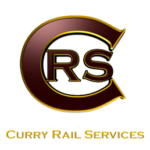IMC Assists Hermance Machine Secure GAT Funds to Plan and Grow Two New Product Lines
Located in Williamsport, PA, Hermance Machine Company is a 100+ year old, family owned and operated industrial machine company specializing in the sale, distribution and manufacture of equipment used primarily in the woodworking and wood products manufacturing industries, with the majority of sales in the mid-Atlantic and northeastern US. The business currently employs approximately 40 full-time skilled employees, many of whom have been with the company for 10 or more years.
The Hermance management team had begun the implementation of a project plan to launch and grow two new product lines through acquisition and product development to complement, deepen and further develop the broad product and customer base in the core industrial equipment business, which had realized consistent year-over-year (YOY) growth. Because of the success of these initiatives to date, as well as, increased revenues and geographic market expansion of the core business, Hermance Machine Company was outgrowing its current facility and was also preparing to purchase additional capital equipment to move forward. With many initiatives in partial progress, coupled with an internal transition in management of the company from parents to sons, the executive management team was seeking assistance and options for planning and implementation.
Through an on-going client relationship with Hermance Machine Company, IMC recognized an opportunity to present the company for consideration to the Pennsylvania Governor’s Action Team, which provides assistance packages to select companies looking to locate, grow or expand in Pennsylvania with an emphasis on quality job creation. To implement the initiative, IMC conducted a series of strategic planning sessions with the Hermance Executive Team to develop a detailed Strategic Project & Business Plan that would result in the creation and retention of nearly 60 full-time jobs, an estimated revenue increase of 20% YOY with a total project investment of $3.2 million. The strategic plan and proposal were successfully submitted and approved by the PA Governor’s Action Team. In addition to providing direction and clarity for the Hermance leadership team, this process also resulted in an assistance package offering from GAT that included a robust combination of grants, low interest financing, tax credits and employee training reimbursements totaling more than $2.1 million. Hermance Machine company continues to implement these plans.
In local media articles and published press releases from PA GAT, owners Joe and Claire Strouse expressed their appreciation for IMC’s assistance by saying, “Our local Innovative Manufacturers’ Center personnel were instrumental in assisting us to prepare and qualify for this opportunity.” (https://imcpa.com/imc-helps-hermance-machine-secure-state-funding-expandsupporting-nearly-60-jobs/) They also stated, “We would have been hard pressed to complete our appeal to the Governor’s Action Team without IMC doing the heavy lifting and having their backing and support.” (https://www.sungazette.com/news/topnews/2019/10/local-company-to-expand-with-state-grants/)


